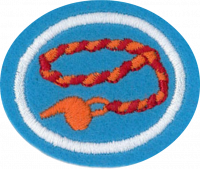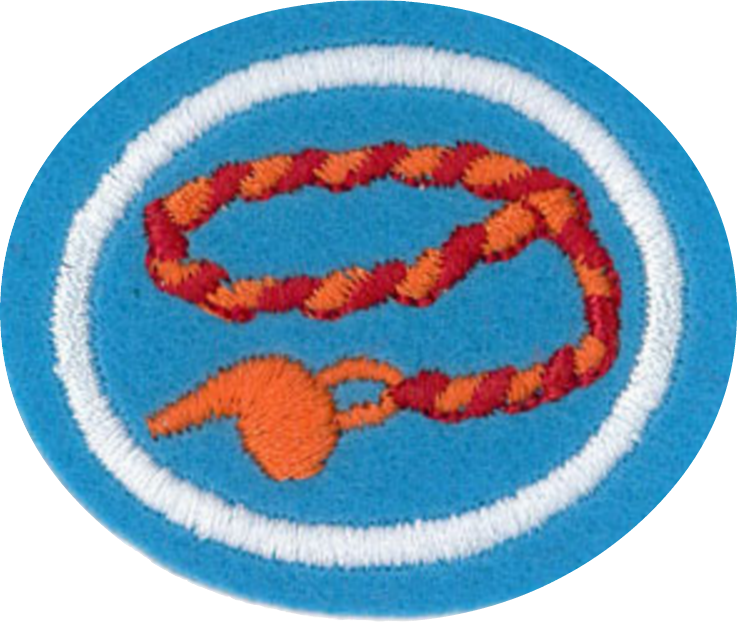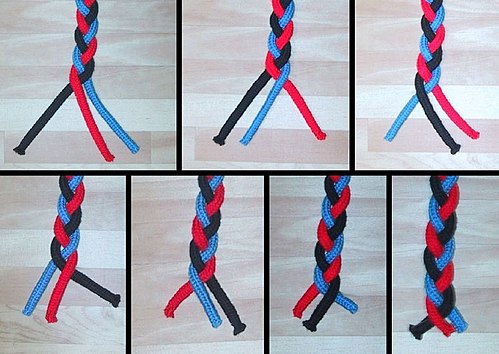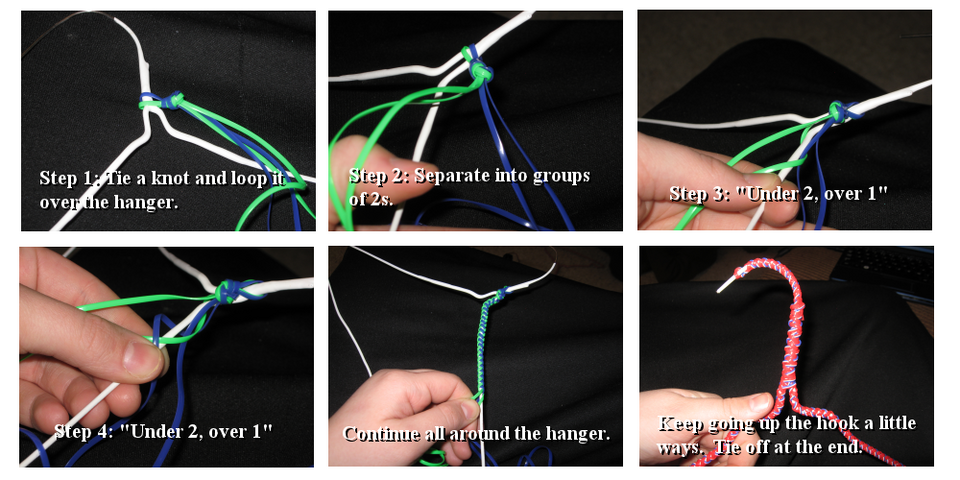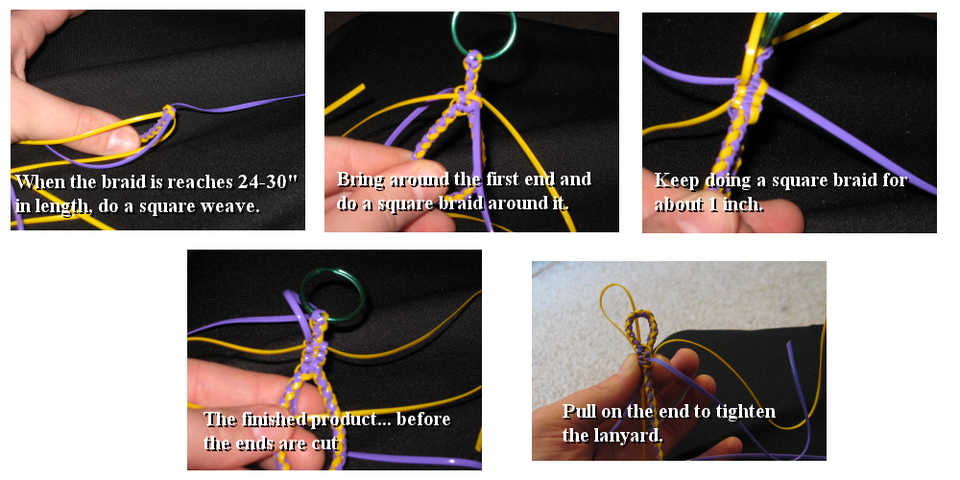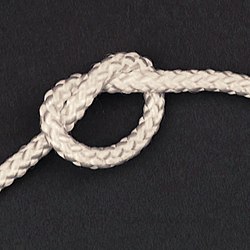AY Honor Braiding Answer Key
1
To make a three strand braid we start with the picture on the upper left, and proceed clockwise.
- Move the blue strand from the right to the center, bringing us to the second picture.
- Move the black strand from the left to the center, bringing us to the third picture.
- Move the red strand from the right to the center, bringing us to the fourth picture.
- Move the blue strand from the left to the center, bringing us to the fifth picture.
- Move the black strand from the right to the center, bringing us to the sixth picture.
- Move the red strand from the left to the center, bringing us to the seventh picture which has the strands in the same order as the first.
The sequence of left-to-center, right-to-center, left-to-center, right-to-center repeats until the braider reaches the end of the strands or decides to quit.
2
This is an easy project that does not take very much time. To start, you will need: a keyring or other ring/fastener, and two strands of gimp (flat, plastic string), each strand about 3-4 feet long.
Fold each strand in half and thread through the ring/fastener. Then begin braiding.
- Step 1: Cross over two strands that are opposite each other (see illustration).
- Step 2: Thread the cross-strands through: "over 1, under 1".
- Step 3: Pull tight
Repeat until the zipper pull or key chain reaches the desired length (4-5 inches).
3
First, you must learn to do the four strand braid, sometimes called the lanyard braid (not the round or square braid). The way to remember this is "under 2, over 1." Follow the illustration.
To make a hanger cover, just do this braid around the hanger.
4
Follow the instructions for a four-strand braid from requirement 3 above, starting with two 8-9 foot strands folded in half. At the end, start doing a square braid around the first part, forming a loop. This can be adjusted when you are done.
5
How to start or end depends on the material being braided.
Starting
- Rope, string, or lace
- Lay the ropes (or strings or laces) parallel to one another with the ends even and tie an overhand knot in the entire bundle.
| Tying the Overhand Knot |
|---|
|
Use: one of the most fundamental knots and forms the basis of many others including the simple noose, overhand loop, angler's loop, reef knot, fisherman's knot and water knot. The overhand knot is very secure, and can jam badly, so only use if you want a permanent knot. It is often used to prevent the end of a rope or string from unraveling.
|
- Hair
- Bind the hair you wish to braid using an elastic band near the head. Divide into the desired number of equal-diameter strands.
- Leather
- A wide leather strap can be cut into strips, but left intact near one end.
Ending
- Rope, string, or lace
- Tie the bundle into an overhand knot.
- Hair
- Bind the braid with a rubber band or a decorative hair elastic.
- Leather
- Glue the strands in place, rivet them to another piece, or firmly sandwich them between two other pieces of leather.
